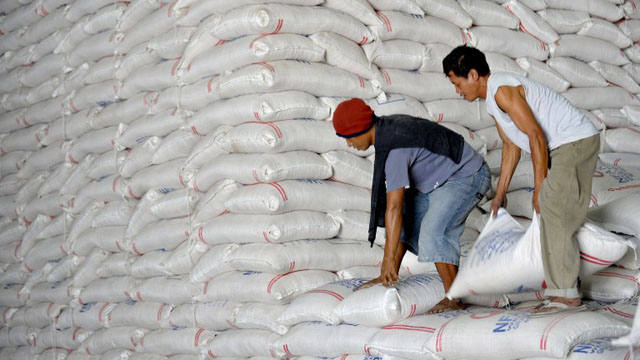SUMMARY
This is AI generated summarization, which may have errors. For context, always refer to the full article.

The Philippines, one of the world’s top importers of rice, has booked imports of 350,000 tons of the grain to head off any chance of a shortage during the third quarter of 2013 when supplies of its staple food normally run short.
The imports were forced in part by the fact that rice inventories in the Philippines dropped to a 6-month low at the start of March. A large part of the country’s rice harvest comes in during the last quarter of the year.
The government of President Benigno Aquino III is taking aim at being self-sufficient in rice in 2013. But most analysts believe the Philippines will still need to import almost 1.0 million metric tons of rice because of rising consumption caused in part by the country’s expanding population which will soon top 100 million people.
The government’s National Food Authority said Vietnam won an April 3 tender to supply the 187,000 tons of rice, whose quality is partly determined by the proportion of broken grain in the shipment.
The deal had been announced by Vietnam’s Agriculture Ministry in mid-April and only confirmed by the Philippines on April 30.
The composition of the rice from Vietnam would be 10% long grain and 25% broken, the standard quality rice imported by the Vietnamese and the Thais. Higher grade, more expensive 5% broken rice, would fetch a premium of almost $100 over the 25% broken variety.
The NFA had also announced it would be importing 163,000 tons of rice from 4 countries as part of trade import commitments under the World Trade Organization. Of the planned rice imports, some 98,000 tons will come from Thailand, one of the world’s top rice exporters, with 25,000 tons each coming from China and India, and the remaining 15,000 tons from Australia, the Philippine government announced in early April.
Rice stocks in the Philippines as of March 1st, 2013 stood at 1.94 million metric tons, the lowest since Sept. 1, 2012, data from the Bureau of Agricultural Statistics showed. Since rice inventories reached 2.78 million tons on November 1st, the level of rice stocks has fallen over 30 percent, the government said.
Philippine rice production had suffered constraints over the years due to limited acreage and low yields.The Philippines planted about 4.66 million hectares to rice in 2012. Neighboring Vietnam plants over 7 million and Thailand sows more than 10 million hectares to rice.
The Philippine government is spending anywhere from 40% to 60% of the Agriculture Department budget on irrigation and infrastructure in mainly rice-growing areas. – Rappler.com
Note: Rene Pastor is with Philippine Commodities Digest, a weekly publication of New Jersey-based A & V Media that provides a comprehensive roundup of developments and trends in the country’s key farming and mining sectors. He is a freelance journalist who worked with the news agency Reuters for nearly 23 years. He graduated with a Masters degree in International Affairs from the New School in New York city and received a bachelor of arts in Communications from the Ateneo de Manila University. Rene is also a lecturer at Middlesex County College in Edison, New Jersey.
Add a comment
How does this make you feel?
There are no comments yet. Add your comment to start the conversation.